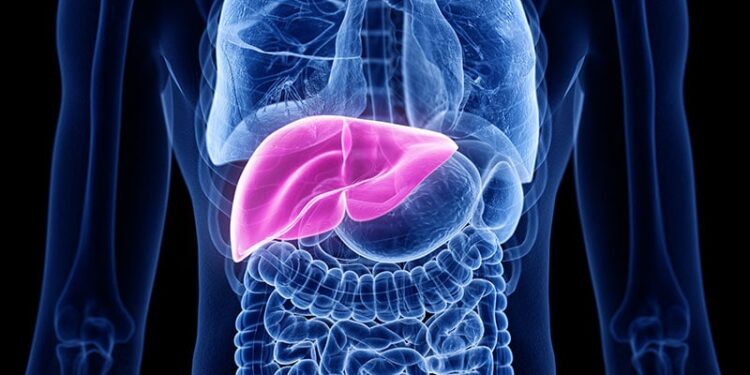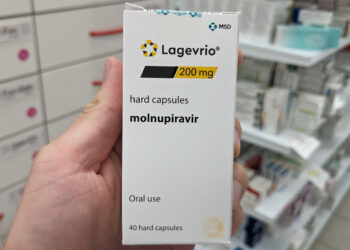TOPLINE:
The De Ritis ratio, defined as the ratio of serum aspartate aminotransferase (AST) to serum alanine aminotransferase (ALT) levels, effectively stratified the risk for 30-day mortality in patients with sepsis-associated liver injury (SALI), with a ratio > 1 significantly predicting an elevated risk and a ratio ≤ 1 showing no increase in the risk for mortality.
METHODOLOGY:
- Researchers conducted a retrospective study in patients diagnosed with sepsis on the basis of the Sepsis-3 criteria and with SALI to define clinical subphenotypes of SALI using laboratory-based risk stratification approaches and evaluated their association with mortality.
- They analysed two large cohorts from intensive care unit databases and included 12,716 patients with sepsis (mean age, 65.2 years; 57% women) in the derivation cohort (2008-2019) and 4538 patients with sepsis in the validation cohort (2003-2016), all of whom underwent screening for SALI.
- Patients with SALI were identified within the first 7 days of sepsis diagnosis using the Modified Drug-Induced Liver Injury Criteria, with at least one criterion met for defined ALT or alkaline phosphatase levels, combination of total bilirubin and ALT levels, or combination of total bilirubin and alkaline phosphatase levels. This resulted in 3235 patients with SALI and 9481 patients without it in the derivation cohort.
- The severity of SALI was categorised on the basis of three risk stratification approaches:
- De Ritis ratio: defined as the ratio of serum AST to serum ALT levels, with patients categorised as having ratios of ≤ 1, > 1 and < 2, and ≥ 2.
- R-factor: calculated as the ratio of ALT levels divided by their upper limit of normal (ULN) to alkaline phosphatase levels divided by their ULN, with patients categorised as having R < 2, ≥ 2 and < 5, and ≥ 5.
- Serum ALT levels: patients categorised as those with ALT levels < 2 ULN, ≥ 2 and < 5 ULN, and ≥ 5 ULN.
- The primary endpoint was 30-day mortality.
TAKEAWAY:
- SALI was associated with an increased risk for 30-day mortality in the derivation cohort (hazard ratio [HR], 1.73; P < .0001), with a similar association noted in the validation cohort (HR, 1.46; P < .0001).
- In patients stratified on the basis of De Ritis ratios in the derivation cohort, the risk for 30-day mortality was higher in those with a ratio ≥ 2 (HR, 2.46; P < .0001) and > 1 and < 2 (HR, 1.56; P < .0001), and no increased risk for mortality was noted in those with a ratio ≤ 1. The ratio also served as a prognostic marker with discriminatory ability in the validation cohort.
- Other stratification methods also showed an association with the risk for 30-day mortality in the derivation cohort, with an elevated risk for mortality observed in patients with R ≥ 5 (P < .0001), R ≥ 2 and < 5 (P = .0045), and R < 2 (P < .0001) and in patients with ALT levels ≥ 5 ULN, ≥ 2 and < 5 ULN, and < 2 ULN (P < .0001 for all). Similar trends were noted in the validation cohort.
- A De Ritis ratio ≥ 2 consistently identified patients with a high risk for 30-day mortality across all admission types (medical and surgical) and sources of infection.
IN PRACTICE:
“This study identifies the De Ritis ratio as a robust tool for stratifying 30-day mortality risk in SALI,” the authors wrote.
“The De Ritis ratio’s simplicity and accessibility make it a proper candidate for straightforward clinical use, particularly in critical care settings where rapid, informed decision-making is essential,” they added.
SOURCE:
This study, led by Lars Palmowski, Intensive Care and Pain Therapy, University Hospital Knappschaftskrankenhaus Bochum, Bochum, Germany, was published online on March 27, 2025, in eClinicalMedicine.
LIMITATIONS:
The two datasets used in this study varied in data collection and patient management, which could have potentially introduced confounding factors. Some subgroup analyses involved small sample sizes, resulting in widened CIs and the possibility of sparse-data bias. Additionally, other approaches for risk stratification, such as using biomarkers, might have superior or complementary predictive power.
DISCLOSURES:
This study did not receive any external funding and was exclusively financed by institutional resources of the authors. The authors declared having no conflicts of interest.
This article was created using several editorial tools, including AI, as part of the process. Human editors reviewed this content before publication.
Source link : https://www.medscape.com/viewarticle/de-ritis-ratio-predicts-risk-mortality-sepsis-associated-2025a10007x0?src=rss
Author :
Publish date : 2025-04-04 12:00:00
Copyright for syndicated content belongs to the linked Source.














